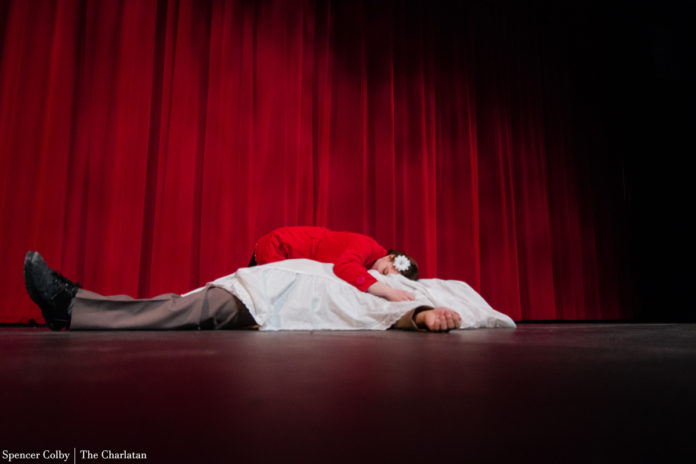Sock ‘n’ Buskin’s production of Shakespeare’s King Lear is an exercise in balancing creative liberty with the play’s traditional script. Ultimately, the results are disappointing.
The show is set in 1950s Hollywood, although this does not carry through logically with the adapted script. It is not clear to the audience how this theme relates, if at all, to the storyline, or if it is merely a backdrop in front of which the play is set. The production team appears to have bitten off more than they could chew with the difficult task of communicating modern creativity within the original plot.
Even with Shakespearian theatre, an audience member should be able to understand the basic structure of a play without having read it first. This is not the case with this production, which strays drastically from the course of the original plot.

Regan is not the only character left out of the plot. Edmund and Edgar, two pivotal characters in the original production, were removed completely, changing the motivations of the other characters.
When Lear realizes he has made a mistake in ignoring his third daughter, Cordelia, he returns to her with the help of Gloucester, an earl loyal to the king. Gloucester is blinded by Goneril for trying to help Lear. In this production, however, Gloucester is only metaphorically blinded, having the film torn out of a reel which represents his eyes. The creative choices made in this scene are perhaps the worst in the production–they are unclear and only take away from the audience’s attention to the acting.
Instead of being killed by grief over the death of Cordelia, Sock ‘n’ Buskin’s Lear is killed by Goneril, his other daughter. Goneril’s apparent motivation for this is to receive some sort of award, however, she is caught immediately after the act, making her character appear unnecessary and without any depth.
The distracting dancing of other characters at inappropriate moments, inconsistent costume changes, and the distance from the play’s original plot take away from the valuable aspects of this production: the poetry and the acting.
Lear, played by Olivia Botelho, is a well-played and passionate character. However, the script makes it unclear if Botelho’s character is a man or woman. Lear’s pronouns continue to change throughout the production. While casting a female lead in a traditionally male role is a creative way to adapt to a modern setting, the lack of attention to Lear’s pronouns leads the audience to question the motivations for such a change from tradition. If one is going to place focus on subverting traditional gender roles in a play, other roles should be changed as well.

Modern adaptations of Shakespeare are tricky. For a production to work in a modern setting, alterations to the script must be made. Alterations must be coherent and in keeping with traditional plot points despite the modernized setting. A careful alteration of the script to fit the chosen setting can introduce audiences to a near-magical experience in both confusion and discovery.
Unfortunately, Sock ‘n’ Buskin’s creative liberties came at the expense of the audience’s understanding. This production is too divorced from its original context and left the audience questioning creative choices rather than the message of the story.
The expectation of community theatre is not perfection, but a coherent plotline is to be anticipated. A work of Shakespeare should emphasize the skill of the actors and the depth of the characters. This production failed to do that.
Sock ‘n’ Buskin’s production of King Lear is not a production of Shakespeare’s work. Instead, it is a patchy, confusing conglomeration of scenes made to resemble Shakespearian theatre.
Featured image by Spencer Colby.




